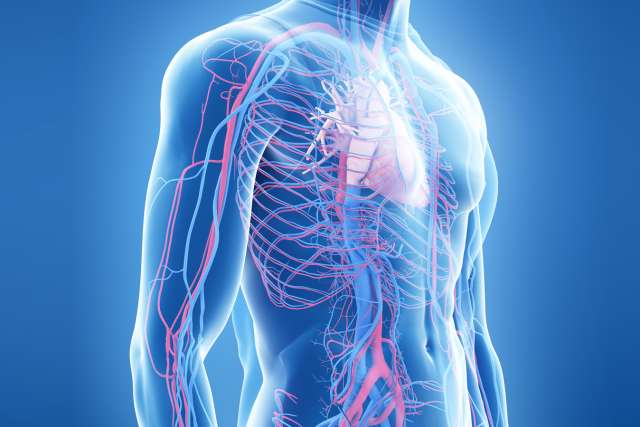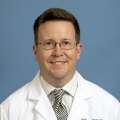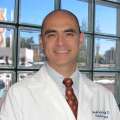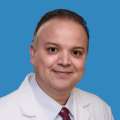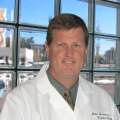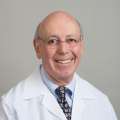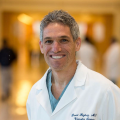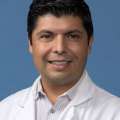Vascular and Endovascular Surgery
Our vascular surgeons use state-of-the-art, research-backed treatments for all types of blood vessel problems outside the heart. We use minimally invasive or noninvasive techniques, allowing for quicker recoveries with minimal downtime.
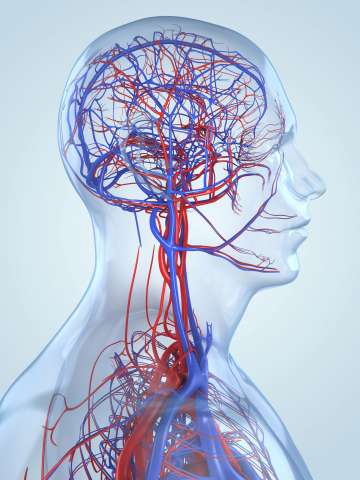
Why choose UCLA Health for vascular and endovascular surgery
UCLA Health vascular and endovascular surgeons offer specialized treatment for conditions affecting any artery or vein outside your heart. As a high-volume center, we see more than 100 patients a day. You receive all the diagnostic, imaging and treatment services you need in one convenient location.
Highlights of our program include:
Advanced treatment with minimal downtime: We use noninvasive or minimally invasive techniques for nearly all treatments. This means we use only local anesthesia, allowing you to return home the same day. Many of these techniques use incisions that are so small they don’t require a stitch.
Specialized experts: Our vascular surgeons specialize in specific diagnoses and techniques. This subspecialization means you receive treatment from a physician who is an expert in your condition. The technologists who perform diagnostic imaging also have specialized training in blood vessel studies, helping ensure that you receive an accurate diagnosis.
Team-based services: UCLA Health vascular surgeons work with multiple experts throughout our network to ensure you receive targeted and effective treatment. In our Wound Care Center, we collaborate with multiple specialists, including podiatrists, plastic surgeons and physicians who are expert in wound care.
Research-driven care: Our physicians participate in and lead a broad range of clinical trials. This research involvement means you receive the most up-to-date therapies, including enrollment in a clinical trial, when appropriate. Our physicians have also been involved in establishing new and groundbreaking treatments, many of which are now used nationwide.
Exceptional outcomes: We pride ourselves on our excellent outcomes. The Division of Vascular and Endovascular Surgery is part of the Vascular Quality Initiative, a national database we use to track our outcomes against local, regional and national standards. We consistently meet and exceed these local and national standards.
Treatment for rare diseases: UCLA Health doctors formed the Vascular Low-Frequency Disease Consortium to collaborate with other vascular surgeons across the nation and the world. We bring all our data and expertise together to learn more about the most effective therapies for rare vascular diseases. If you have a rare vascular condition, you receive up-to-date, advanced care at UCLA Health.
Our areas of care
The Division of Vascular and Endovascular Surgery offers multiple specialized services. Our areas of care include:
Outpatient evaluation clinic
Our outpatient evaluation clinic allows us to consult with new patients, diagnose conditions and offer follow-up care. When you arrive for your first appointment, we make sure you have an appointment in the vascular laboratory that same day. This ensures efficient diagnoses, while reducing the need to travel for multiple visits.
Diagnostic vascular laboratory
The vascular laboratory is located in the same building as the evaluation clinic for ease of access and convenience. Here, our specialized technologists offer comprehensive blood vessel studies to evaluate arteries and veins. These noninvasive tests help us diagnose blood vessel problems quickly and accurately.
Ambulatory procedure unit
We perform a wide range of outpatient procedures in this unit. Every procedure is done with local anesthesia, so you can return home the same day with next-to-no downtime. Our specialists offer a broad range of catheter-based treatments, including angiograms, ablations and stent placements.
Vascular Center
The Gonda (Goldschmied) Vascular Center provides comprehensive care for venous insufficiency, a condition that affects blood flow between the legs and heart. We offer an array of minimally invasive and noninvasive treatments to improve blood flow. The majority of procedures are done on an outpatient basis, meaning you can return home the same day.
Wound care center
We collaborate with multiple specialists to treat patients with nonhealing wounds. You may receive care from a vascular surgeon, podiatrist, plastic surgeon or wound care physician. This team-based approach ensures you receive the right treatment from an expert.
Hyperbaric center
We offer hyperbaric therapy for complex vascular problems that haven’t been resolved with other treatments. Hyperbaric oxygen therapy involves breathing in 100% oxygen in a special pressurized chamber. The therapy can accelerate healing by increasing oxygen in the bloodstream. It may be an appropriate treatment for people with severe nonhealing wounds, such as foot ulcers in people with diabetes. Learn more about hyperbaric medicine.
Vascular and endovascular conditions we treat
Vascular and endovascular surgeons treat a wide range of conditions. We offer noninvasive, minimally invasive and open surgical treatments for blood vessel problems outside of the heart.
The most common conditions we treat include:
Aneurysms: A weak spot in an artery that can turn into a bulge or balloon outward. If an aneurysm ruptures, it can cause severe artery damage and life-threatening bleeding.
Blocked arteries: Restricted blood flow through the arteries, often due to plaque buildup and artery narrowing (atherosclerosis)
Carotid artery disease: A condition that occurs when plaque builds up in the carotid arteries, the blood vessels in the neck that carry blood to the brain
Peripheral artery disease (PAD): A condition that occurs when plaque forms, causing artery narrowing in the vessels that carry blood to the legs
Thoracic outlet syndrome: A group of disorders characterized by compressed nerves or blood vessels in the thoracic outlet, the space between the first rib and collarbone (clavicle)
Vascular malformations: Irregularities in the blood vessels that are usually present at birth (congenital), including:
- Arteriovenous fistulas: Atypical connections between arteries and veins
- Arteriovenous malformations (AVMs): An irregular connection between arteries and veins occurring in the brain
- Venous malformations: Irregular widening or tangling of the veins
Venous insufficiency: A condition that occurs when the valves of the leg vein don’t work properly
Treatments we offer
Many of our treatment techniques are noninvasive or minimally invasive. We use many endovascular techniques, which involve delivering treatment through small, hollow tubes (catheters) inserted through blood vessels.
Our surgeons offer a wide range of procedures to treat vascular problems, including:
Ablation: We may use ablation techniques to treat venous insufficiency. The surgeon places a catheter through a blood vessel and guides it to the affected vein. Then they send heat or radiofrequency energy to close off the vein. Blood reroutes around the closed vein.
Atherectomy: This procedure removes plaque buildup to restore blood flow through a blocked artery. We insert a catheter with a rotating blade to remove excess plaque. We may use an atherectomy to treat peripheral artery disease.
Balloon and stenting (angioplasty): This treatment restores blood flow through blocked arteries and is often an option for carotid artery disease or peripheral artery disease. The surgeon sends a catheter with a small, deflated balloon to the blocked artery. When the catheter is in position, the surgeon inflates the balloon to push plaque away and clear a path for blood to flow. They may also place a hollow metal tube called a stent to help keep the artery open.
Embolization: Embolization is another technique for closing off veins. The surgeon inserts a catheter through a blood vessel and guides it to the affected vein. They inject a special glue or foam through the catheter to close the vein. We may use embolization to treat venous insufficiency or a vascular malformation.
Hemodialysis or chemo port access: Some of our surgeons specialize in techniques for vascular access. These include placing chemotherapy ports — small, flexible tubes placed in a vein to allow chemotherapy medications to be delivered without a needle prick. We also specialize in hemodialysis access. Hemodialysis treats kidney failure by removing excess toxins, fluids and waste products from the blood. Hemodialysis access may involve connecting an artery and vein in your arm or placing a catheter in a large vein to allow blood to flow through a hemodialysis machine.
Phlebectomy: A vascular surgeon may use a phlebectomy to treat varicose veins, the bulging veins that may develop along with venous insufficiency. The surgeon makes a tiny incision in the skin and uses a hook-like tool to remove the varicose vein. These incisions are so small, they often don’t require a stitch.
Sclerotherapy: We may use sclerotherapy to treat venous insufficiency, varicose veins or vascular malformations. The surgeon inserts a catheter through a blood vessel and guides it to the affected vein. They send a special solution directly into the vein, which causes the vein to close and eventually collapse. The collapsed vein is reabsorbed by the body and blood reroutes through other nearby blood vessels.
Meet our team
Our vascular and endovascular surgery team is made up of clinical leaders, subspecialty experts and active researchers. We use the latest, most effective treatment options to offer you optimal surgical results.
Chief
Physicians
Contact us
Call 310-206-6294 to request an appointment with a vascular surgeon at UCLA Health.
Find your care
You receive comprehensive care for vascular disease in one convenient location. Call 310-206-6294 to learn more about vascular and endovascular surgery services.
